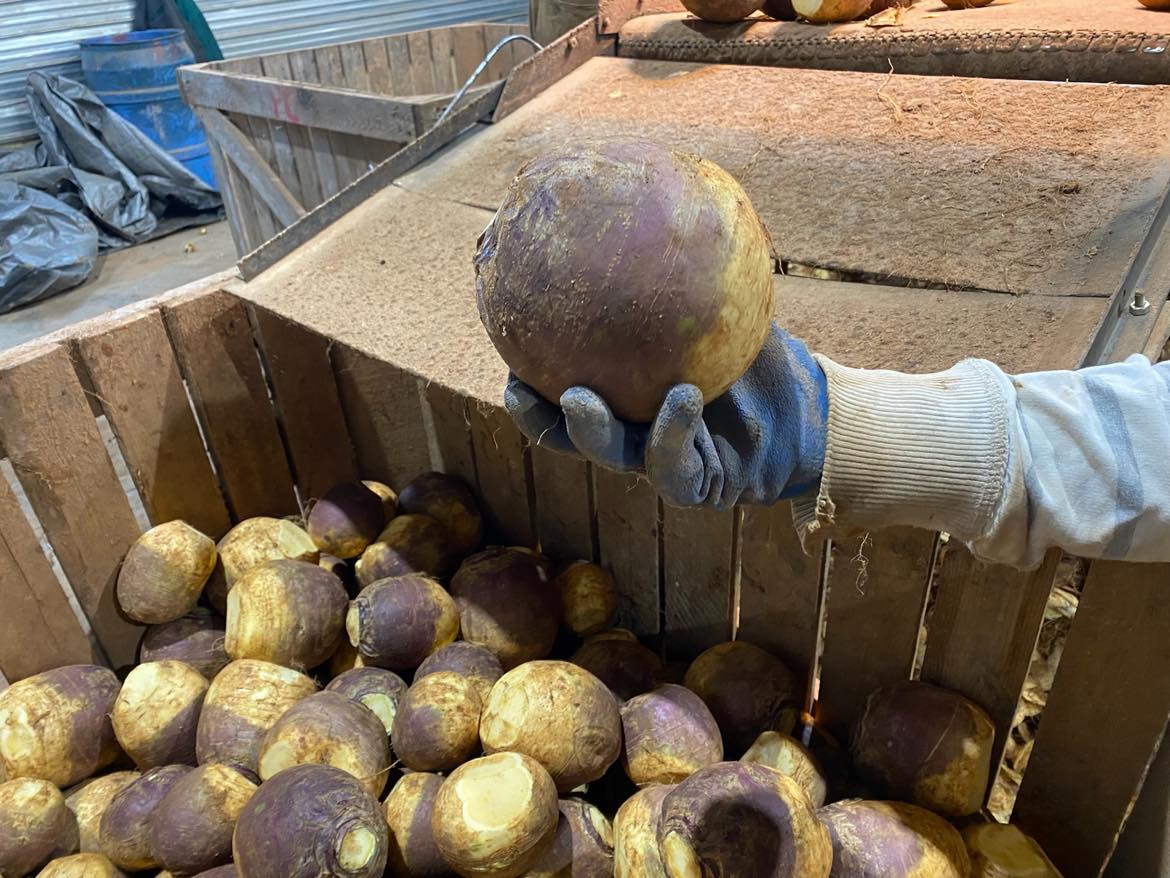Turnip

In 2020, there were 331 acres of turnips planted which produced 3,777 metric tonnes of turnips. PEI is the third largest producer of turnips in Canada (behind Ontario and Quebec)!
Turnip (Brassica rapa, Rapifera Group), biennial vegetable belonging to the Cruciferae family and grown in all provinces as a root crop. The turnip has a growing season of approximately 60 days. Served like spinach, the leaf is an excellent source of calcium, iron and vitamins A, B and C. The turnip contains calcium, potassium, sodium, and vitamins A and C.
Turnips are typically planted around the end of Spring and harvested in the Fall. This crop may also be stored for short periods of time depending on the availability of markets.
What is the difference between a Turnip and a Rutabaga??
Turnips and rutabagas are both members of the cabbage family, Brassicaceae. The rutabaga is thought to be an ancient cross between a turnip and a cabbage, and therefore a hybrid. Both of these root vegetables are a good source of complex carbohydrates for soups, stew, and casseroles. and have edible greens as well.

Turnips are usually white and purple on the outside, with very white flesh, while rutabagas are yellowish and brown on the outside with orange-yellow flesh. Rutabagas are also generally much larger than turnips.
So for a quick rule of thumb, the brownish-yellowish ones are rutabagas, and the smaller white and purple ones are turnips.
In terms of their flavour, rutabagas are slightly sweeter-tasting than turnips whereas turnips have a slightly more radishy flavour.




